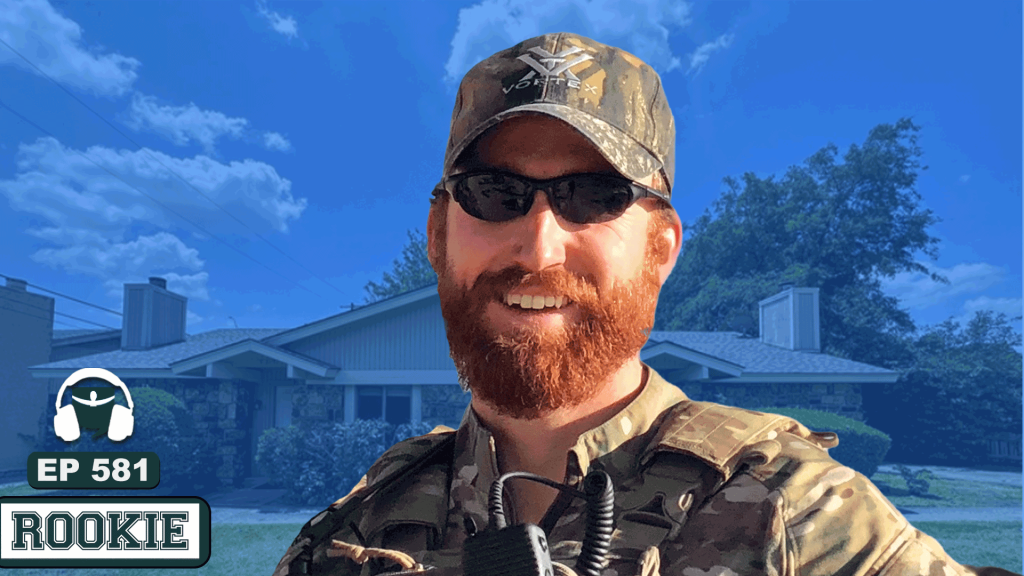Building Long-Term Wealth with Just 3 Properties: Why Less Really Can Be More
Think you need dozens of rentals and a full-time property management team to build real wealth with real estate? Think again. For Army servicemember Matthew Morneault, three properties—and a lot of hustle—are all it takes to build meaningful wealth, support his family, and create generational memories.
From a Meth House Disaster to Lakefront Cabins
When Matthew bought his first house at 21, he didn’t even think of himself as a real estate investor. He was just a broke college student with $20,000 leftover from an accident settlement. The house was a wreck—a one-and-a-half bedroom “fixer” in Oregon with a collapsing foundation and suspicious plumbing that turned out to be an unglued DIY nightmare.
Did that stop him? Not even close. He dug up the crushed sewer line by hand, learned home repairs on the fly, and turned that run-down shell into a livable rental. He learned lessons the hard way—no inspection, bad financing, and major repairs with no cash reserve—but those lessons turned into confidence that carried him through every future deal.
From Rookie Mistakes to a Repeatable Playbook
After commissioning as an Army officer, Matthew moved frequently for deployments and assignments. Each time, he applied what he learned from that first nightmare project. He bought a new-construction home in North Carolina using his VA loan, lived there with his family, then rented it out long-term.
He didn’t see much monthly profit at first—sometimes only breaking even—but when he eventually sold, he pocketed over $150,000 in equity and appreciation. That single long-term hold taught him the power of letting renters pay down a mortgage while the property appreciates quietly in the background.
Small but Mighty: Three Properties, Big Results
Fast-forward to today: Matthew’s portfolio is small but mighty. He owns:
A long-term rental in Colorado
A primary residence in Arizona, which he’s converting to a mid-term rental for traveling nurses and professionals
His crown jewel: five lakefront cabins in rural Maine that generated over $90,000 in gross revenue in their first year alone.
His Maine property is a classic value-add success story. He watched the asking price drop from $670,000 to below $500,000, made a low offer with local bank financing, and negotiated seller concessions for repairs. He then added three RV pads to boost seasonal income and leveraged short-term rental demand to pay the mortgage and then some.
Matthew’s Evolving Strategy: Sweat Equity + Smart Financing
Instead of chasing big city flips or massive multifamily complexes, Matthew focuses on manageable projects where he can add value: finishing cabins, installing RV pads, adding mid-term rental furniture, and even applying for grants. (He’s now installing EV chargers on his Maine property—paid for mostly with state energy grants.)
He also uses his VA loan benefits strategically: zero or low down payments, smart refinancing, and knowing when to convert a primary residence into a rental for steady passive income.
Lessons Learned for Investors: Keep It Simple
1️⃣ Think Value-Add First
If a property can’t offer something extra—an ADU, RV parking, or additional rental potential—it’s not worth the time.
2️⃣ Use Local Lenders
When Matthew bought his lakefront cabins, the seller had already lined up financing options with the local credit union. Small community banks can often be more flexible than big banks, especially when they know the property well.
3️⃣ Learn by Doing
From digging sewer lines to negotiating commercial loans, Matthew built skills by facing every problem head-on. Each issue made the next deal easier.
4️⃣ Small Portfolios Can Be Big Wealth
Three well-chosen properties with multiple units and multiple strategies can outperform ten underperforming single-family homes. Less overhead, less stress, and more freedom.
5️⃣ Leverage Military Benefits (Smartly)
Multiple VA loans are possible if you understand your entitlement limits. And don’t overlook the funding fee—Matthew always tries to put at least 5% down to reduce that extra cost.
What’s Next for Matthew?
Matthew’s next move is converting his Arizona home into a mid-term rental for traveling medical staff, using local contacts, Furnished Finder, and even cold-calling HR departments to stay booked. He’s also staying open to opportunities—whether it’s adding new pads in Maine or helping other military families build wealth through smart real estate moves.
Final Takeaway: There’s No Perfect Path
For Matthew, real estate is about patience, grit, and learning from every curveball. Some deals will be a grind. Some will shine. But if you buy right, add value, and play the long game, even a small portfolio can fund a life you love—and leave something behind for your kids, too.
Want to learn more tips like this?
Join the Boston Real Estate Investors Association today, get plugged into our local network, and access the strategies, lenders, and deals that make stories like Matthew’s possible.
👉 Ready to start your own “less is more” wealth plan? Let’s talk!

